During the late 19th century, a German man named Otto Lilienthal achieved some of the first successful, repeated flights using gliders. Regrettably, he suffered a crash on August 9, 1896, and died the next day. Reportedly, his last words were “Sacrifices must be made!”
This was a mentality shared by all the pioneers of flight. During the inception of aviation, there were few professions out there more dangerous. A quick look at all the pilots from the first decades of flight and you will find very few of them who got to see retirement after a long and successful career. If you’ll pardon the cliché, these men and women were made of sterner stuff than the rest.
One of these daredevils was Australian Charles Kingsford Smith. He discovered his passion for flying during World War I and, for the rest of his life, always looked for new opportunities to soar through the skies. In the process, he set a number of world firsts such as the first trans-Pacific flight from the United States to Australia. Unfortunately, like many of his peers, Kingsford Smith’s career ended in tragedy and his final resting place remains, to this day, a mystery.

Early Days
Born on February 9, 1897, in Hamilton, a suburb of Brisbane, Australia, Charles Edward Kingsford Smith was the seventh child of a banker named William Charles Smith and Catherine Mary, née Kingsford.
Although the family originally went simply by Smith, they added the surname Kingsford in 1903 when they relocated to Canada. The move did not last long and, in 1907, the Kingsford Smiths were back in Australia, but this time in Sydney. Charles became known as Smithy, a nickname he would carry for the rest of his life.
When he was nine years old, Charles almost drowned at Bondi Beach when he got dragged out to sea by a rip current. The young boy struggled to stay afloat, but eventually lost consciousness. He was saved just in time by the lifeguard service which had only recently came into existence, and was resuscitated by a nurse who was in the right place at the right time. Later, during his aviation career, people said that Kingsford Smith was terrified of flying over the ocean and would get sick whenever he did it. This may have been the genesis of his angst.
As a teenager, Charles enrolled at a technical school where he studied to become an engineer. He also joined the Senior Cadets, a military youth organization.
Service in the War
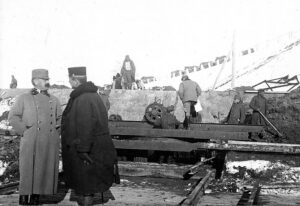
After the outbreak of World War I, Kingsford Smith enlisted in the Australian Imperial Force in February 1915. The 18-year-old took part in the Gallipoli campaign where he served as a sapper with the 4th Signal Troop, 2nd Division Signal Company. He had his second brush with death here. As he described in a letter to his parents, he heard some “ping” noises very close to him. When he finally reached shelter, Kingsford Smith noticed that a bullet came so close to his head that it had frayed the edge of his cap. Later, he became a dispatch rider during campaigns in Egypt and France.
After being promoted to sergeant, Smithy transferred to the Australian Flying Corps in October 1916. This is where he got his first taste of flying and developed a passion that would follow him for the rest of his life. He trained in England where he showed immediate aptitude as a pilot. He was commissioned as second lieutenant with the Royal Flying Corps (RFC), the precursor to the Royal Air Force.
Kingsford Smith was sent to the French front as part of the No. 23 Squadron. There, he shot down four enemy aircraft, as well as launching multiple attacks on ground targets and balloons. Inevitably, Smithy was bested in a dogfight and was shot down himself. He walked away from the crash, although his injuries did require amputation of several toes. Kingsford Smith received the Military Cross “for conspicuous gallantry and devotion to duty”. Because his recuperation would take a long time, he was allowed to visit his parents and Australia and, upon returning, was promoted to Captain and assigned as a flying instructor.
Life after the War
By the time Smithy was fully healed, the war had ended. He wasn’t sure what he wanted to do with his life, but he knew that it had to involve flying. He teamed up with another pilot named Cyril Maddocks and formed a joy-flight company that offered pleasure airplane trips throughout England. However, the young Smith was already looking for opportunities that would bring him fame and fortune.
In 1919, Australian Prime Minister Billy Hughes announced the Great Air Race. A prize of £10,000 would be awarded to the first person who completed a flight from Great Britain to Australia in under 30 days. Unsurprisingly, Kingsford Smith wanted to take part in the race, but he was denied membership into the Royal Aero Club of Australia (RACA), and, by default, entry into the competition. Officials were concerned over Smithy’s lack of navigational experience over the 11,180-mile route and thought that it would be dangerous to let him race. Instead, the prize was claimed by brothers Sirs Ross and Keith Macpherson Smith.
Although he was not allowed to compete in the Great Air Race, an idea sprouted in Smithy’s mind. It was another surefire way to glory: the first trans-Pacific flight from the United States to Australia. Spoiler alert: this would be the feat that brought him everlasting fame, but now was not the time. Kingsford Smith traveled to America to search for sponsors for his daring escapade but failed to find any. He occupied his time with other flying gigs which included stunt work for a circus and for Hollywood movies. However, he saw another pilot die in an accident and decided that the job was too risky, even for him. He returned to Australia in 1921.
Back Home
He might have had it with life as a stunt pilot, but the experience did not detract from Smithy’s pleasure of flying. Back home, he started another joy-riding company. He also became a salaried pilot with the West Australian Airways. Started by another RFC veteran, Sir Norman Brearley, this was the first Australian airline with a scheduled air service.
In his personal life, Smithy married Thelma Eileen Hope Corboy in 1923. By all accounts, it was an unhappy marriage that only lasted for a few years as Kingsford Smith was not made for a stable life in one place. His biographer Ian Mackersey said that the aviator’s mind was always in the sky, thinking about the next time when he would be able to fly again. When he was on the ground, Kingsford Smith enjoyed women, booze, and spending his money almost as fast as he made it.
The Trans-Pacific Flight
Smithy believed there was huge potential for an airmail service in Australia. Together with another aviator called Charles Ulm, he started the Interstate Flying Services, but found it difficult securing contracts.
To show people that airmail was the future, the two pilots wanted to perform some demonstration flights to attract sponsors and investors. They did a round trip of Australia in a little over 10 days which garnered plenty of attention. Sensing an opportunity to secure funding, Kingsford Smith forgot all about his airmail business and, instead, once again promoted his true dream: the trans-Pacific flight. This time, it worked. Kingsford Smith not only obtained a grant from the government of New South Wales, but also received financial backing from two businessmen: Myer Department Store founder Sydney Myer and California oil tycoon George Allan Hancock.
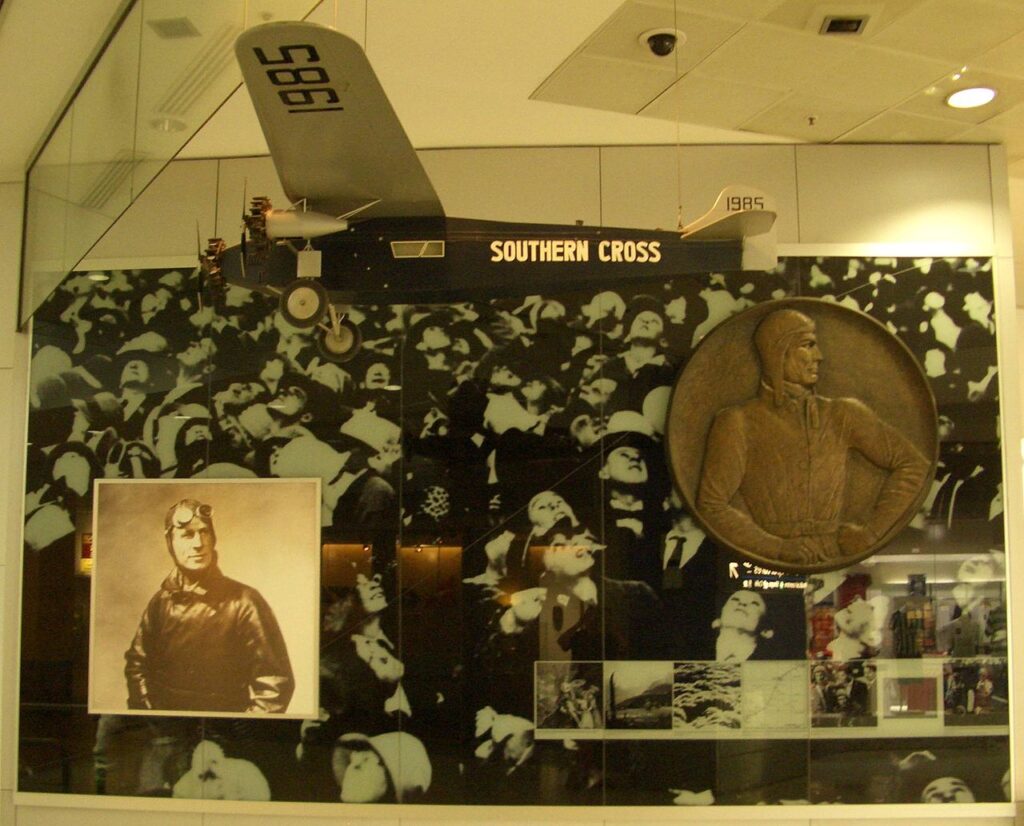
First off, they had to buy a plane. Smithy and Ulm traveled all the way to America to find the one they wanted but, bizarrely, still ended up buying one from another Australian. Specifically, they purchased a Fokker F.VII from polar explorer Sir Hubert Wilkins. It started life as the Detroiter, but Smith rechristened it the Southern Cross.
The goal was to take off from Oakland, California, and finish in Australia. This was not a non-stop flight, so they would land to refuel two times, the first of which would be in Hawaii. Over the previous year, ten pilots had died attempting just this leg of the trip. The odds were not in their favor, but the airmen were determined to carry on.
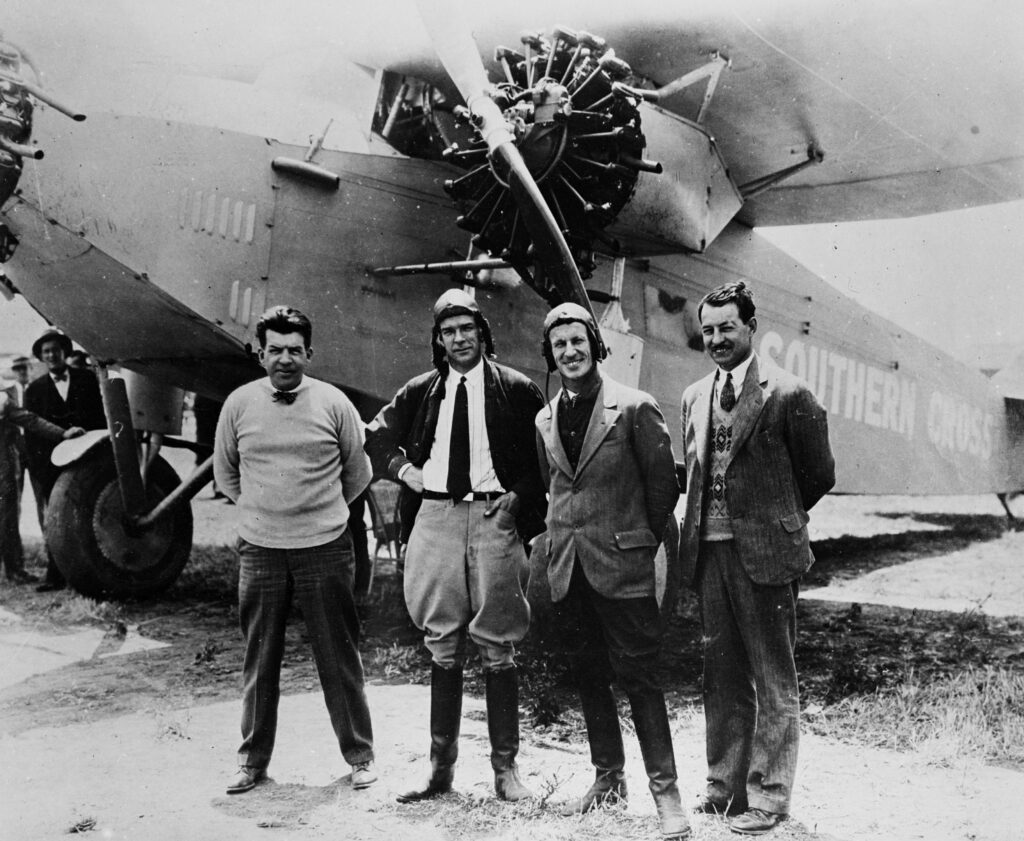
Kingsford Smith had a four-man team. He was the pilot while Ulm acted as relief pilot. On board were also two Americans: James Warner who was the radio operator and Harry Lyon who served as navigator. The foursome took off from Oakland on May 31, 1928. They reached the island of Kauai to refuel after an uneventful 27 hours. From there, they set off on the longest stage of their journey to Fiji. To make matters worse, they encountered a massive lightning storm but, nevertheless, reached the island of Suva in one piece. The final stage saw them fly into Brisbane Airport to a hero’s welcome as tens of thousands of people cheered them on. After 83 hours and 38 minutes of flying time, Kingsford Smith and his crew completed the first ever trans-Pacific flight.
Across the Tasman Sea
Kingsford Smith received a ton of rewards for his feat, including the Air Force Cross, an honorary position as squadron leader with the Royal Australian Air Force and over £20,000 in funding. Now that the trans-Pacific flight was out of the way, he could focus again on his more practical ambition – that of establishing an airmail company. Like before, he considered a series of daring flights to be the best way of showcasing the viability of such a service.
In August 1928, just a few months after his journey across the Pacific, Smithy performed the first non-stop flight across mainland Australia, taking off from Point Cook near Melbourne and landing in Perth. Then, less than a month later, he already had a new ambition – to be the first to fly across the Tasman Sea to New Zealand. Not only would this have been another gratifying feather in Smithy’s aviator cap, but he hoped that it would also secure an airmail contract between the two countries.
At the time, achieving the first trans-Tasman flight was the “next big thing” for many Australian and New Zealand aviators. However, in January of that year, two Kiwi pilots named John Moncrieff and George Hood disappeared over the sea while attempting the flight. No trace of them or their plane, the Aotearoa, has ever been found. Kingsford Smith’s venture in September 1928 was the first attempt since their disappearance.
He had a crew of four again. Charles Ulm was by his side as relief pilot and joining them were radio operator Thomas McWilliams and navigator Harold Arthur Litchfield. They boarded the Southern Cross and took off on September 10. After a flight of 14 hours and 25 minutes, they landed at Wigram Airport in Christchurch. Tens of thousands of people were there to cheer them on, including students and public servants who were given the day off for this momentous occasion.
After the Highs Come the Lows
With another world first under his belt, Kingsford Smith was the talk of the town once again, but he would soon find himself involved in a few controversies with fatal consequences that had a lasting impact on his reputation.
Now that the trans-Tasman flight was also out of the way, Kingsford Smith’s pragmatic side started showing again. In 1929, he intended to fly to England to purchase four new aircraft for his budding company. He took a crew with him aboard the Southern Cross, but had to make an emergency landing in the middle of nowhere in Western Australia.
The crew was safe, but the plane was in no condition to fly, so they patiently waited to be rescued. Of course, the disappearance of a hero the stature of Charles Kingsford Smith prompted a massive search involving many other pilots. Among them were two of his friends named Keith Anderson and Bobby Hitchcock. They flew aboard the Kookaburra hoping to spot a sign of the downed airplane. Unfortunately, they also suffered problems and crash landed in the Tanami Desert. While Smithy and his crew would be found and rescued, these two pilots died of exposure.
Image suggestion: Kookaburra Memorial
It hardly seemed fair to blame Kingsford Smith for the tragedy, but rumors soon started circling that the forced landing of the Southern Cross had been nothing but a publicity stunt. The media sensed a juicy story and fanned the flames of controversy. Some even accused the aviator of purposely making it harder for search teams to find them. That way, the longer they stayed gone, the more press they received.
The incident became known as the “Coffee Royal Affair”, named so after the black coffee and brandy drink which the crew of the Southern Cross purportedly drank while awaiting rescue. An official inquiry was launched into the matter and, although Kingsford Smith was exonerated, his reputation was tarnished in Australia.
Australian National Airways Opens and Closes
Overseas, everyone still loved Smithy so he climbed into his trusty Southern Cross and took to the skies for a few more headline-grabbing flights. In June 1930, he completed an east-west crossing of the Atlantic from Ireland to America in thirty-one-and-a-half hours. This also meant that he completed a circumnavigation of the world which he started with his first trans-Pacific journey. Later that year, he won an air race from England to Australia, breaking the speed record while flying solo.
Alongside Charles Ulm, in 1929 Smithy finally founded the airline he dreamed of for years, which was called Australian National Airways. It commenced operations in January 1930 with five airplanes with Kingsford Smith himself flying the Southern Cloud. The company wasn’t around for long. The airline had to close down following another landmark moment in the history of aviation, but one that Kingsford Smith could have certainly done without – the first airliner to disappear during a flight.
On March 21, 1931, the Southern Cloud left Sydney for Melbourne. Kingsford Smith was not the one flying. On board were two crewmen and six passengers. They all perished in a crash in the Snowy Mountains of New South Wales due to bad weather. Their final location remained a mystery for 27 years until a hiker named Tom Sonter stumbled upon the wreckage. It goes to show that, back then, being a passenger on an airplane took about as much courage as being a pioneering aviator.

The Journey of the Southern Cross Minor
It seems like almost every other plane that Kingsford Smith piloted apart from the Southern Cross was destined for tragedy.
In 1931, he added a new aircraft to his collection: an Avro Avian Mk.V he dubbed the Southern Cross Minor. He wanted to use it to set a new speed record for the Australia-England flight, but was unsuccessful. He sold it a few years later to another aviation pioneer, British pilot Bill Lancaster.
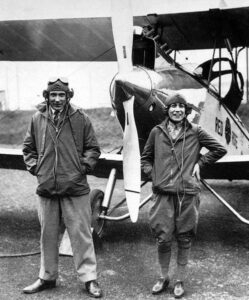
Lancaster had a career worthy of mention. It mirrored that of Kingsford Smith and was highlighted by triumphs, controversies, and death. He also started flying during World War I and later pursued it as a career. In 1927, he achieved one of the longest flights in a small aircraft by journeying from England to Australia. He was accompanied by his lover, Jessie “Chubbie” Miller, who became a successful aviatrix in her own right.
A few years later, the two were living in Miami, Florida. While Lancaster was in Mexico, looking for work, they brought in a writer named Haden Clarke to help Miller write her memoirs. They started an affair and Miller even decided to leave Lancaster for her new beau. Upon hearing this, the aviator returned home and, soon enough, Clarke was found dead from a gunshot to the head.
Lancaster was charged with murder. His alibi didn’t hold water and he admitted to forging two suicide notes. He had recently purchased a revolver and witnesses heard him say that he will get rid of Clarke. You would think this would be an open & shut case, but Lancaster was actually found “not guilty”.
He might have dodged prison, but his reputation took a big hit and Lancaster became a pariah. He was desperate to regain just a fraction of his lost prestige and that is where the Southern Cross Minor came in. Lancaster decided to go for the England-South Africa speed record as that was the in vogue flight of the day. He bought the plane from Kingsford Smith and set off on April 11, 1933.
Everything that could go wrong did. Lancaster had gotten lost several times and fell behind schedule. He was so sleep deprived that officials tried to detain him when he landed for refueling. He ignored them and pressed on and crashed in the Sahara Desert.
Image suggestion: Wreck of the Southern Cross Minor
Miraculously, the pilot escaped his ordeal almost unscathed. He still had a serious problem, though, as now he was stranded in the middle of the desert with few supplies. He waited to be rescued, occasionally firing off flares, but the rescue never came. Lancaster died eight days later, on April 20, 1933. It was almost 30 years until French troops found his mummified corpse and the wreck of the Southern Cross Minor. He had left behind a diary detailing his last days on Earth which was later published with Miller’s permission. What’s left of the plane sits in the Queensland Museum.
The Lady Southern Cross and Smithy’s Final Flight
In 1935, Kingsford Smith had a very close call in the Southern Cross while attempting the first trans-Tasman airmail flight. One of the plane’s three motors stopped due to a damaged propeller blade. The three men aboard the craft only survived because Smithy’s co-pilot, P.G. Taylor, climbed out of the cockpit and transferred oil from the dead motor to the others using a suitcase and a thermos flask. Kingsford Smith had to dump all the mail and extra cargo and barely made it back to Sydney.
This was a sign that, perhaps, it was time to retire the Southern Cross. Smithy purchased a new plane – a Lockheed Altair called the Lady Southern Cross. He sold his famous airplane to the Commonwealth of Australia so it could be put on display in a museum.
At first, the new aircraft appeared to be a worthy replacement. With it, Kingsford Smith performed the first eastward flight over the Pacific Ocean, going from Australia to the United States. In 1935, he decided to use it in order to break the England-Australia speed record.
He set off on November 6, 1935. With Smithy was co-pilot Tommy Pethybridge. His longtime flying partner, Charles Ulm, had vanished and, presumably, died a year prior while flying over the Hawaiian islands.
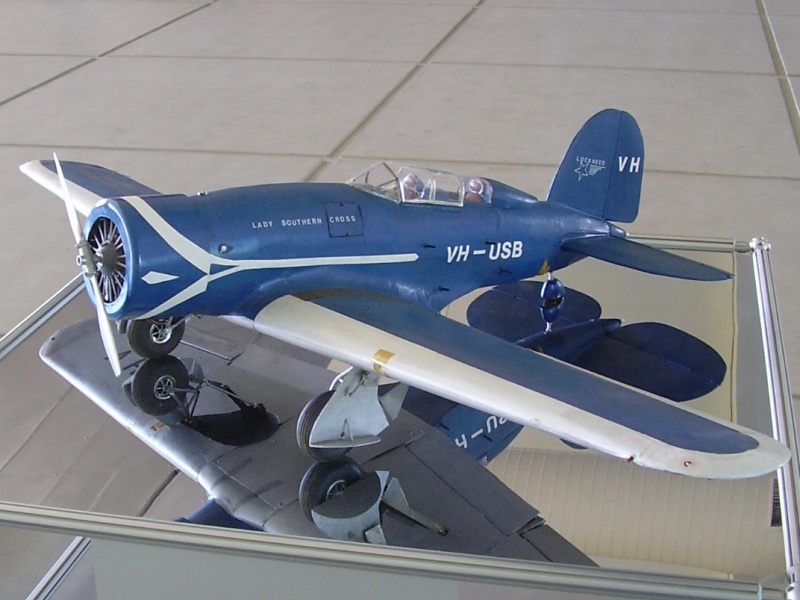
Unfortunately, this was a fate the two would share because the Lady Southern Cross also disappeared over the ocean. On November 8, it took off from India and was headed to Singapore, but was never seen again. It is presumed the plane crashed in the Andaman Sea, off the coast of Burma, killing Charles Kingsford Smith and his co-pilot, Tommy Pethybridge. A year and a half after the disappearance, an undercarriage leg and wheel washed up ashore on an island and remains the only part ever recovered from the Lady Southern Cross.
In recent times, filmmaker Damien Lay claimed in 2009 to have found the wreckage of the airplane. His proclamation has been met with much skepticism from experts and aviation historians. He has not made the location public and, presumably, is still trying to raise funds for a recovery expedition.



